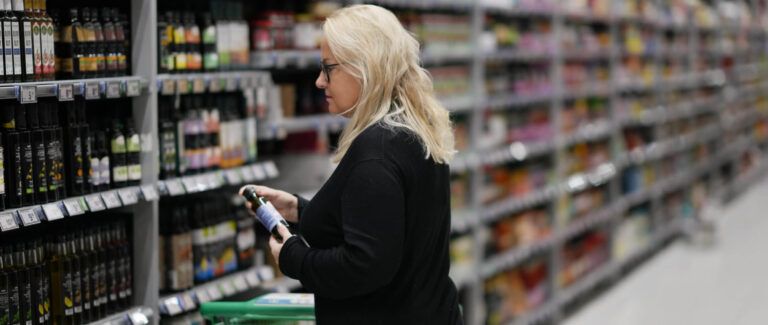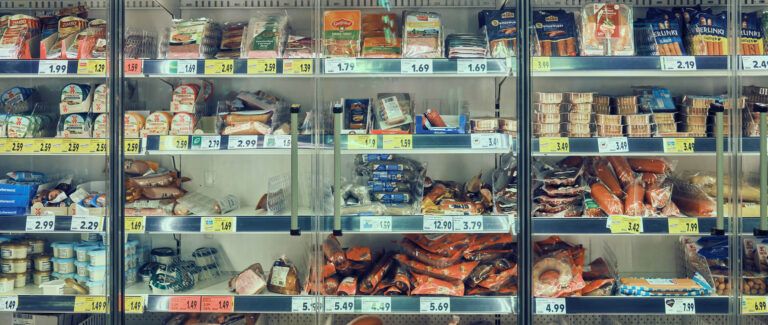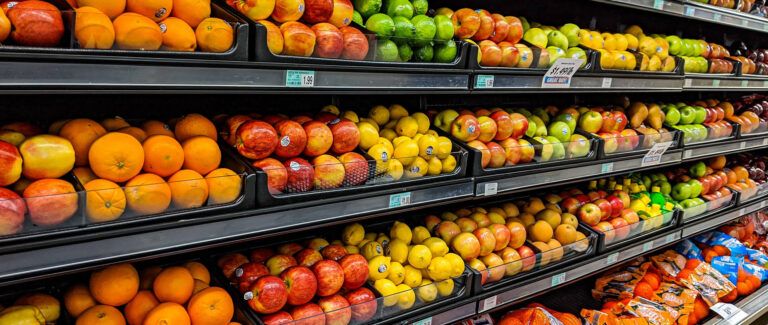Earlier in September, RELEX organized its annual Grocery Forum in Stockholm, Sweden. The event gathered senior representatives from 15 of the biggest grocery retailers across Europe, many of them leaders in their own markets, with a combined revenue amounting to over €190bn.
The two-day gathering sparked dynamic discussions around unified retail planning, breaking out of existing silos to optimize operations end-to-end, and the technologies needed to support them. Here’s what Europe’s grocery retailers are talking about today:
The Definition of Supply Chain in Modern Retailing
Traditionally, the supply chain has been focused to the logistics department with KPI’s and improvement measures specifically targeted to availability, wastage and inventory value.
The reality, however, is that the effectiveness of the retail supply chain affects not only the logistics business area but instead, spans much broader with a clear influence in the results and costs across promotions, marketing, cost of goods sold, labor and store set-up, just to name a few. Whilst this may have always been the case, it is becoming increasingly clear that the competitiveness and pressures of modern-day retail demand that retailers enforce a broader definition of supply chain with customer demand at the core.
What’s more, when retailers drive their operations towards unified retail planning, they are able to unleash a broader value through the measure of not only optimizing logistics costs but also, breaking down traditional silos and sub-optimization within processes. This means encompassing the full spectrum from category strategy, store layouts, assortment, merchandising and the aggregation of in-store demand at shelf to DC, workforce management and supplier collaboration.
When retailers drive their operations towards unified retail planning, they are able to unleash a broader value through the measure of not only optimizing logistics costs but also, breaking down traditional silos and sub-optimization within processes.
When defining supply chain as end-to-end then this broadens the business case from siloed KPI measures in logistics to opening up further cost areas and opportunities. This includes the realization of lost sales opportunities, for example, the ROI of a promotional campaign which has underperformed due to an inaccurate forecast. Another example is to consider the availability of a product at shelf-level rather than availability as a total store measure which could mean that a product is unavailable on-shelf but available in the stock-room.
Unified Retail Planning Requires Harmony in People, Systems and Processes
The shift in definition toward a true end-to-end supply chain requires retailers to adopt a model that removes the risk of thinking and working in siloed business functions and instead, encourages cross-functional integration to share valuable knowledge and enhance capabilities and outputs. This can be achieved by aligning KPIs end-to-end, rather than each silo working for their own KPIs. Furthermore, you’ll need to embrace a mentality that allows decisions to be made that might not benefit a particular silo although it benefits the whole organization.
However, there’s no single target operating model that will fit all retail organizations. There are global retail examples of effective supply chain operating models ranging from a central strategic supply chain function with regional tweaks per business unit to a separate supply chain function per business unit. Whilst the optimal supply chain organization may differ across retail according to individual company strategy and culture, what’s clear is that for the model to work effectively then it must encompass people, processes and systems in order to be effective in cross-functional optimization.
Creating the right process and organizational structures are often discussed during supply chain projects. What’s often forgotten is the importance of talented users. They are a crucial factor in ensuring a successful and continuously developing retail supply chain operation, even after a new system or process is implemented.
See our Supply Chain Transformation: The Complete Guide for tips on how to incorporate these aspects when choosing and implementing a supply chain planning system.
Store Specific Planogramming; Focus on Quick Wins and Strategic Initiatives
Unified retail planning begins with the customer and this naturally extends to the definition of the customer offer and its execution at shelf. Whilst it’s broadly understood that no store is truly average, the reality lies that many retailers continue to base assortment and planograms on chain or cluster averages.
Shelf-space apportioned to the average store demand drives inaccurate product exposure and increases on-shelf stock-outs, wastage, and mark-downs whilst placing increasing pressure on in-store replenishment and the need for frequent deliveries. Put simply, a lack of investment in the assortment and space elements of the end-to-end supply chain shifts pressures and costs into other retail disciplines and effectiveness whilst causing a poorer shopping experience.
The phrase ‘store-specific’ in relation to assortment and space often raises concern because of the potential impact that an assortment localization at store level will have on other departments and stakeholders e.g. buyer agreements and logistics costs. Going store-specific should be about finding a good balance. For quick wins, the first step is to identify opportunity categories with available space to roll-out optimized shelf-space at store level which can be achieved without assortment changes or rationalization. Secondly, as a small number of categories can truly drive a significant value and ROI you should identify categories with high customer demand variation across the store estate to cluster and localize the assortment.
Read our tips on Planogram optimization at store level in this whitepaper.
It’s a Journey…
Whilst the experience and challenges within retail supply chain may be similar in retailers across the globe, it’s key to note that every retailer remains unique and therefore, the definition and transition to true unified retail planning with an end-to-end supply chain is a journey to be tailored.
The strategic goals of a company teamed with its people, processes and systems define the optimal starting point, staged process and measurable value to be attained along the way.
Our role as a solution provider is to be collaborative in balancing specific retailer knowledge, experience and industry best-practice to achieve the best results as well as to provide systems that allow retailers to benefit from customization to specific needs without operating bespoke code-streams with little or no future upgrades.
To address the challenges in grocery retail supply chain, we’ve combined a best practice guide, Best practices for managing grocery retail supply chains, highlighting key approaches for increasing both responsiveness and efficiency in grocery supply chains.




